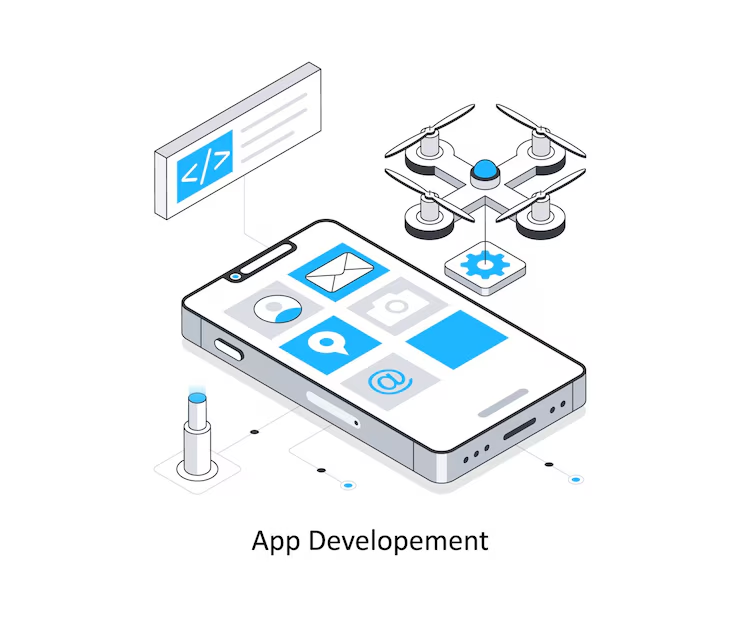As mobile technology continues to evolve, building a scalable mobile app is no longer optional—it’s essential. Whether you’re a startup founder or a tech lead at an enterprise, ensuring your mobile app is future-proof, performs under heavy loads, and can handle growth is key to long-term success.App development is the process of designing, building, and maintaining software applications for mobile or desktop platforms to solve user problems or enhance digital experiences.
In this guide, we’ll break down the best practices, tools, and architecture strategies to build a truly scalable mobile app in 2025.
Why Scalability Matters
Scalability refers to your app’s ability to handle increased users, data, and interactions without compromising performance. An unscalable app may work fine with 1,000 users but crash under 100,000.
Failing to plan for scalability can lead to:
- App crashes and poor user experience
- Higher maintenance costs
- Difficulty in launching updates or new features
- Missed growth opportunities
Step 1: Define Your Scalability Goals
Before writing code, clearly define:
- Target audience size
- Growth projections over 1, 3, and 5 years
- Core features vs. future add-ons
This helps you design an app architecture that can grow with your usiness.
Step 2: Choose the Right Tech Stack
Your tech stack lays the foundation for app scalability. Choose technologies that are well-supported, secure, and performance-oriented.
✅ Front-End Frameworks
- Flutter: High-performance UI, growing ecosystem
- React Native: Reusable components, large community
✅ Back-End Options
- Node.js: Scalable, asynchronous operations
- Firebase: Great for MVPs and real-time apps
- Django: Secure, clean, and scalable Python-based framework
✅ Databases
- PostgreSQL: Excellent for structured data
- MongoDB: Great for dynamic, unstructured data
- Google Cloud Firestore: Ideal for real-time syncing
Step 3: Opt for Modular Architecture
Design your app using a modular architecture, where features are split into components or microservices. This approach:
- Improves maintainability
- Simplifies testing and debugging
- Allows independent feature scaling
Use clean architecture principles to separate concerns across:
- Data layer
- Domain layer
- Presentation layer
Step 4: Implement Robust APIs
APIs are the bridge between your app and back-end systems. Ensure they are:
- Versioned
- Well-documented
- Secured with authentication (OAuth2, JWT)
- Optimized to reduce payload size
Consider using GraphQL for flexible, efficient data fetching.
Step 5: Optimize for Performance
A scalable app must also be high-performing. Optimize by:
- Minimizing app launch time
- Lazy loading features and media
- Compressing images and assets
- Caching frequently used data
Tools like Firebase Performance Monitoring and Flipper can help track bottlenecks.
Step 6: Use Scalable Cloud Infrastructure
Cloud services allow you to scale on demand without needing physical servers.
Top Cloud Platforms for Mobile Apps:
- AWS Amplify / AWS Lambda
- Google Firebase / Google Cloud Functions
- Microsoft Azure Mobile Apps
These platforms offer auto-scaling, load balancing, and global content delivery.
Step 7: Secure Your App at Scale
Security becomes more challenging as your app grows. Follow these practices:
- Use HTTPS for all connections
- Secure APIs with tokens and rate limits
- Encrypt sensitive data at rest and in transit
- Keep dependencies up to date
Implement role-based access controls and monitor for vulnerabilities regularly.
Step 8: Plan for Continuous Integration and Deployment (CI/CD)
Use CI/CD pipelines to release updates seamlessly and ensure app stability.
Recommended Tools:
- GitHub Actions or Bitrise for automation
- Fastlane for automated app store deployment
- TestFlight or Firebase App Distribution for beta testing
This allows faster iterations, fewer bugs, and quicker user feedback.
Step 9: Monitor and Analyze Usage
Monitoring helps you stay proactive. Use tools to track:
- Crashes (e.g., Firebase Crashlytics, Sentry)
- User behavior (e.g., Mixpanel, Amplitude)
- Server performance (e.g., Datadog, New Relic)
Step 10: Plan for Global Expansion
If you’re targeting a global audience, build with internationalization in mind:
- Use localization frameworks for multiple languages
- Support multiple time zones and currencies
- Optimize data delivery with CDNs
Bonus Tips for 2025 App Scalability
- Use AI/ML SDKs wisely for personalization and recommendations.
- Embrace edge computing for faster local processing.
- Consider progressive web app (PWA) features for offline capability.
Final Thoughts
Building a scalable mobile app in 2025 requires strategic planning, smart architecture, and continuous optimization. By choosing the right tech stack, designing for performance, and preparing for growth from the start, you ensure your app can meet rising user demands and keep evolving. With its ability to reach global audiences and track real-time performance, digital marketing has become an essential tool for brands looking to grow, connect, and stay competitive in the digital age.







